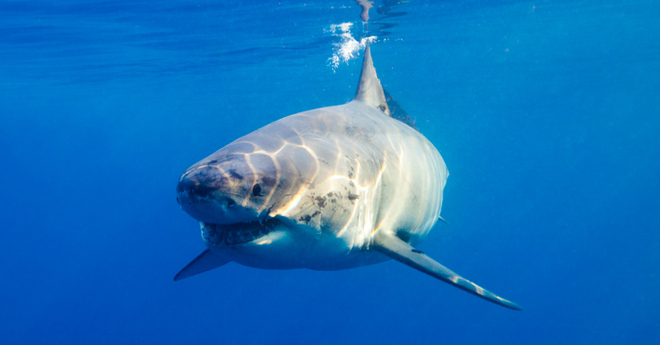By Guest Blogger Christina Albright-Mundy
Far from the man-eaters of the ocean, it is sharks who require protection from humans
The word “shark” is spoken as an excited utterance as often as it is simply stated. “Jaws” in 1975 (and 1978, and 1987) instilled a bone-chilling fear in the general public, and overnight all sharks became Public Enemy No. 1. Immediately following the release of “Jaws,” a shark cull resulted in the deaths of thousands of sharks, precipitate by a fear that all sharks were lying in wait to attack unsuspecting swimmers and surfers.

Once the pandemonium created by Jaws disappeared, the senseless slaughter of sharks, unfortunately, did not. From 1996 to 2000, nearly 200 million sharks were killed exclusively for their fins, according to a 2006 National Geographic news report. This number does not reflect the number of sharks that were killed as a result of by-catch, or entanglement in fishing gear. Some scientists and conservation organizations estimate the number of sharks killed yearly to be much higher, at upwards of 100 million.
The most prevalent reason for shark slaughter today is due to the resurgence in popularity of shark fin soup, an Asian delicacy. Fishermen capture the sharks in the open ocean, remove their fins, and throw the animals back into the water. Nearly all shark species must swim in order to breathe; respiration depends on oxygenated water moving over their gills. The absence of fins means these sharks cannot propel themselves and thus are unable to breathe. They sink to the ocean floor, where they will slowly suffocate to death.

There are over 400 species of sharks, ranging from those measuring less than one foot long (Etmopterus hillianus, the Caribbean laternshark) to over 45 feet long (Rhincodon typus, the whale shark). Though mostly a saltwater species, some sharks, like the bull shark, can live in freshwater as well. They practice everything from planktonic filter feeding to embryonic cannibalism (Carcharias taurus, the sand tiger shark). Today’s existing Elasmobranchii offer it all. The one thing these animals do not have is the thirst for human blood. Only seven shark species have been documented as being responsible for a fatal attack on a human — that’s less than 2 percent of all known shark species. And that 2 percent only racks up an average of 4.2 human deaths per year. Black widow bites and rattlesnake venom claim more victims per year, on average, than shark attacks do.

Sharks have roamed the world’s oceans for hundreds of millions of years, predating even dinosaurs. These apex predators are highly evolved and represent the pinnacle of natural selection. From their imperviousness to cancer, their heightened sensitivity to minute electromagnetic energy and their metabolic ability to digest dead and dying marine animals, sharks face few natural enemies aside from humans. Now, hundreds of millions of years of evolution faces extinction within a few lifetimes if humans do not take action

